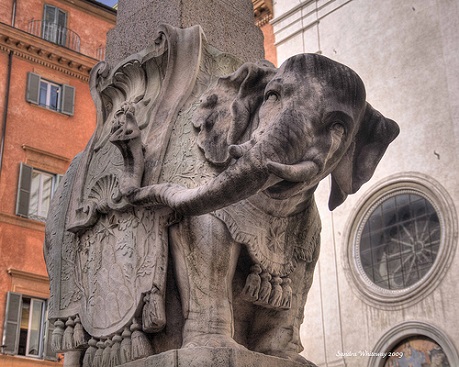In the Bolboli gardens – near the entrance to the left of Palazzo Pitti – one encounters a curious fountain showing an overweight male figure astride a tortoise. Setting aside the tone of playful burlesque which was such an integral part of Florentine Mannerist architecture, one might read this statue as combining traditional symbolism and a concealed meaning.
For the Greeks and Romans, Bacchus was the god of wine (here represented by the water of the fountain) and was popularly associated with the orgies that might result from drunkenness. But at a symbolic level, these libations might be associated with inebriating Wisdom, which plunges those who partake of it into an ecstatic state. This means that wisdom might be represented either by the vine or by the wine it produces. Indeed, since the earliest centuries of Christianity, wine had been seen as the symbol of gnosis, of divine Wisdom. Bacchus, in fact, frequently associated with the Phoenician god Baal, “the Supreme Lord”, whilst his Greek name, Dionysus, means “God with us”.
Thus Bacchus represents the Supreme Godhead (the equivalent of Ganesh in Hinduism), what Christian Gnostics of the third-fifth centuries AD called Christus-Baal. When Greek civilisation was at its height, the bacchantes were, in fact, chaste virgin priestesses dedicated to the veneration of the god of Wisdom. It was only later, when traditional symbols became distorted and traditional social values deformed, that Bacchus became the god of bacchanals, of excess, in a society that had itself become decadent.
Shown riding a tortoise, Bacchus becomes a symbol of the Supreme Godhead leading his creation: the Universe. In fact, for the Greeks and Romans, the tortoise was the symbol of a universe made manifest by the power of the Spirit (what the Hindus call Purusha) and thus symbolises the Throne of God.
Similarly, the tortoise was a symbol of the Great Work of hermetism, which was based on the three main chemical elements of Sulphur, Mercury and Salt. Sulphur was associated with the head of the tortoise (symbolising Heaven or the Upper Level); the shell suggested the Earth (or Middle Level) and was associated with Mercury. Finally, there was the belly of the tortoise, an emblem of Hell and the Lower Level associated with salt.
So next time you are in Florence, pay a visit to the Bolboli Gardens and see this curious fountain, for its symbolism certainly adds a layer of interesting complexity to the colourful and many varied history of Bacchus, the god of wine.










